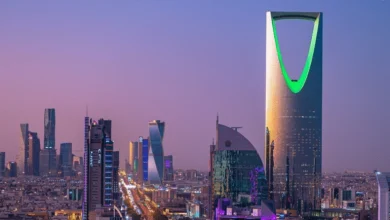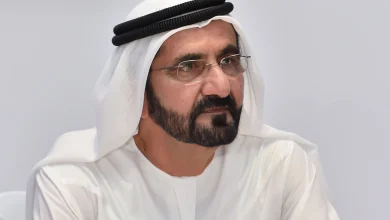
Saudi Arabia’s Public Investment Fund has entered a returns-driven phase. The private sector now plays a larger role, marking a major development in the kingdom’s economic strategy. PIF’s focus has changed from ambitious giga-projects and infrastructure to financial returns, while Saudi Arabia’s private sector takes on more responsibilities. Financial analysts believe this strategic change shows natural progress in Vision 2030’s implementation timeline.
The kingdom faces growing liquidity constraints that led the Saudi government to review its spending patterns. PIF’s new investment approach shows broader changes in achieving Vision 2030 goals as Saudi Arabia balances economic diversification with fiscal sustainability. A vocational expert says this transition provides a great way to learn about Saudi Arabia’s long-term economic trajectory and investment opportunities. The kingdom adapts its ambitious modernization plans to economic realities and maintains its transformative vision through this recalibration.
PIF shifts from giga-projects to phased investments
Image Source: KnowKSA
Saudi Arabia’s Public Investment Fund (PIF) has changed its approach. The fund now favors careful, staged investments over ambitious giga-projects. This change shows the maturity in Saudi Arabia’s economic diversification plans rather than abandoning its vision.
PIF Governor Yasir Al-Rumayyan revealed that a new strategy awaits final approval. The plan targets six vital ecosystems: travel and tourism, urban development, advanced manufacturing, industry and logistics, clean energy, and NEOM as a standalone ecosystem. The fund has also cut spending by up to 60% across its portfolio companies and mandated a 20% budget reduction in 2025.
The fund’s financial power remains strong, with assets under management growing by 19% to AED 3,352.48 billion in 2024. In spite of that, the fund’s average annual return dropped from 8.70% to 7.20%, which led to a more disciplined approach to capital deployment.
This adjustment includes reducing international investments from 30% to about 18-20% of the portfolio. The focus now lies on domestic sectors that offer clearer returns. Bain & Company’s Gregory Garnier explains this change allows for a “staged approach to giga-projects, where instead of launching everything at once, you measure first level of success, and then continue if success is there”.
Saudi government reduces spending to empower private sector

Image Source: Wikipedia, the free encyclopedia
Investment Minister Khalid Al-Falih made an important announcement about the government taking a step back to let the private sector take the lead. “We are scaling back public spending and letting the private sector lead the way,” he stated. The government’s non-oil revenue now makes up more than half of its income. This well-thought-out strategy lines up with Vision 2030’s target to push private sector GDP contribution to 65%.
Saudi Arabia has hit several milestones ahead of schedule as the government reduces its spending. The kingdom’s success in bringing over 700 global companies to set up their regional headquarters in Riyadh is a big deal as it means that they’ve beaten their 2030 target of 500. On top of that, foreign direct investment grew four times while global FDI dropped by 11% last year.
Saudi officials want to energize small and medium-sized enterprises to increase their GDP contribution from 20% to 35% by 2030. All the same, Al-Falih pointed out that SME financing needs innovative solutions to address current shortcomings.
The minister stressed that this shift affects the entire government, including the PIF. “This is what we’re doing day in and day out at the Ministry of Investment, at the PIF and across the government,” he added. The fact that 90% of incoming foreign direct investment now comes from non-oil sectors shows real progress in diversifying the economy while public spending decreases.
Liquidity constraints and Vision 2030 reshape priorities
Saudi Arabia’s Vision 2030 implementation faces mounting liquidity pressures, even as the country’s credit profile gets stronger. The loan-to-deposit ratio went above 100% in 2021, which is a big deal as it means that a historic threshold was crossed in a country known for excess liquidity. This success story of economic diversification brings its own set of challenges.
Saudi banks have responded by doubling their capital market issuances. They raised AED 55.08 billion in 2024, up from AED 21 billion in 2023. Foreign funding has grown from 6% of total liabilities in 2020 to 11% by June 2025. These numbers show a fundamental change in how banks secure financing.
The Saudi Central Bank (SAMA) stepped in with a solution. It introduced a 100-basis-point countercyclical capital buffer in May 2025 that will take effect in 2026. This move should help moderate loan growth and boost financial stability as Vision 2030 moves into its capital-intensive phase.
We have a long way to go, but we can build on this progress. Moody’s upgraded Saudi Arabia’s credit rating to Aa3 with a stable outlook because of continued economic diversification. The corporate bond and sukuk markets have more than doubled over five years and reached AED 135.86 billion by early 2025.
PIF maintains reliable liquidity through this transition. It balances ambitious goals with careful spending and shows how the kingdom adapts to changing economic conditions.
Saudi Arabia’s economic strategy marks a watershed moment as the Public Investment Fund shifts toward returns-driven investments. This progress shows maturity rather than retreat from Vision 2030 goals. The kingdom acknowledges economic realities while pursuing its transformative ambitions.
The PIF has moved from ambitious giga-projects to methodical, phased investments, which demonstrates strategic adaptation. This approach lets Saudi Arabia measure success incrementally before committing more resources. The fund now targets six key ecosystems—with emphasis on domestic sectors offering clearer returns—which signals a pragmatic recalibration rather than reduced ambition.
The Saudi government reduces public spending strategically to create space for private sector leadership. This considered pullback matches Vision 2030’s main goal of increasing private sector GDP contribution to 65%. Several targets have already been exceeded, and over 700 global companies now have regional headquarters in Riyadh.
Recent liquidity constraints have shaped this transition. Notwithstanding that, these pressures paradoxically show success in economic diversification efforts. Saudi banks have adapted their financial strategies to new realities by doubling capital market issuances and increasing foreign funding.
Saudi Arabia maintains strong fundamentals through these adjustments, as shown by Moody’s credit rating upgrade to Aa3. The kingdom’s success in balancing ambitious transformation with fiscal prudence highlights its adaptability. Without doubt, this recalibration represents not a retreat but a natural progress—from state-led development toward sustainable growth driven increasingly by private enterprise and disciplined investment approaches.






